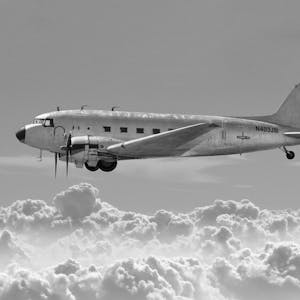Flight mechanics - The basis
About this Course
More than one century after the Wright brothers\' first flight, the flight still defy our intuition. You will learn here how to name the different parts of the airplane and how to describe and quantify its geometry. For that, we need now to share a precise vocabulary to describe the airplane\'s movement and attitude in space, and a refresher on basic general mechanic principles. You will remind how Newton\'s 2nd law allows you to determine what force must be applied on an apple - or on an airplane, to modify the magnitude and direction of its speed. Coming back on the concepts of kinetic energy and potential energy, you will discover the very useful concept of total height and you will be able to explain how an airplane can quickly exchange speed for altitude, while changes in total height are much slower. In the end, you will discover that only a very small number of forces apply on an airplane in flight and that you will be able to classify those that change its energy state and those that modify its trajectory. You will discover the concept of load factor and understand why the pilot of a combat aircraft can feel a weight nine-time greater than his actual weight! Finally, we will establish the lift and propulsion equations, that form the basis of flight mechanics, and you will be able to compute the lift and thrust necessary to follow a given trajectory at a given speed. This course is for anybody interested in learning more about how planes work, the physics of flying, or flight mechanics. It will be of particular interest to undergraduate students in aerospace engineering, trainees as well as senior pilots, journalists, and professionals in the aeronautics sector. Although some mathematical formalism may be present sometimes. It is always doubled by sketches, figures, and hands-explanations. So that, anybody can skip the formulas without losing the core understanding of the concepts. No apples were harmed in the making of this course... This course is only a foretaste of the mechanics of flight. ISAE-SUPAERO and Eric Poquillon will offer you other courses and the first specialization in autumn 2021. Initially, three courses will be published to answer several questions: Can we fly as high as we want? What is a stall? Why do some planes have propellers and others have jet engines? Is an airplane always stable? How do you control an airplane following an engine failure? All this and more will be covered in this series of flight mechanics courses. This course is a part of the specialization \"Fundamentals of Flight mechanics\".Created by: ISAE-SUPAERO

Related Online Courses
As you develop your innovator mindset, you will need to focus on evidence-based entrepreneurship and skills that will help you move forward in identifying and solving problems. You will learn the... more
This is a self-paced lab that takes place in the Google Cloud console. In this lab, you create a Terraform configuration with a module to automate the deployment of a custom network with... more
Want to solve a murder mystery? What caused your computer to fail? Who can you trust in your everyday life? In this course, you will learn how to analyze and assess five common forms of inductive... more
This is an application-oriented course explaining the various aspects of power distribution, indoor and outdoor equipment up to 33kV. The course adopts a cross-disciplinary approach to ensure that... more
In this course, you will learn the basics of CloudFormation and how to use it to manage your infrastructure. After this course, you will be able to: - Explain the purpose and functionality of... more







